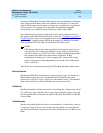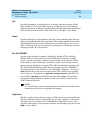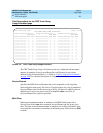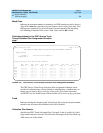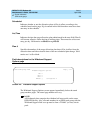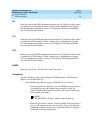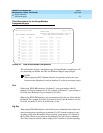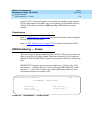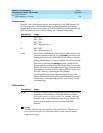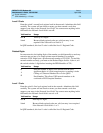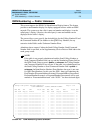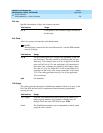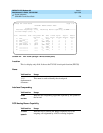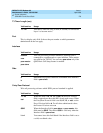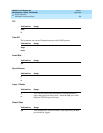
DEFINITY ECS Release 8.2
Administrator’s Guide
555-233-506
Issue 1
April 2000
Screen reference
773ISDN Numbering — Private
17
Network Level
Enter the value of the highest regional level employed by the PNP network. Use
the following table to find the relationship between the network level and the
Numbering Plan Identification/Type of Number (NPI/TON) encoding used in the
QSIG PartyNumber or the Calling Number and Connected Number IEs.
PBX Identifier
NOTE:
The PBX identifier does not depend on the network level. Therefore, in a
level 0 private network you can use this field to create a level 0 number
longer than 5 digits.
Valid entries Usage
0
NPI - PNP
TON - local
1
NPI - PNP
TON - Regional Level 1
2
NPI - PNP
TON - Regional Level 2
blank If this field is blank and the Send Calling Number and/or Send
Connected Number field is
y or r with private specified for the
Numbering Format field on the ISDN Trunk Group screen, the
Calling Number and/or Connected Number IEs will not be sent.
If the field is left blank but
private has been specified in the
Numbering Format field on the ISDN Trunk Group screen, the
Identification Number (PartyNumber data type) is sent for QSIG
PartyNumbers encoded in ASN.1-defined APDUs. In this case,
the ASN.1 data type containing the PartyNumber
(PresentedAddressScreened, PresentedAddressUnscreened,
PresentedNumberScreened, or PresentedNumberUnscreened) is
sent marked as “PresentationRestricted” with “NULL” for the
associated digits.
Valid entries Usage
0
to 9 Enter up to 5 digits. Digits entered in this field are added to the
beginning of local extensions. The PBX identifier is added
first, before Level 1 or Level 2 codes. For example, in private
networks with a 7-digit numbering plan, the first 3 digits of the
private-network number are often considered the PBX
identifier.



